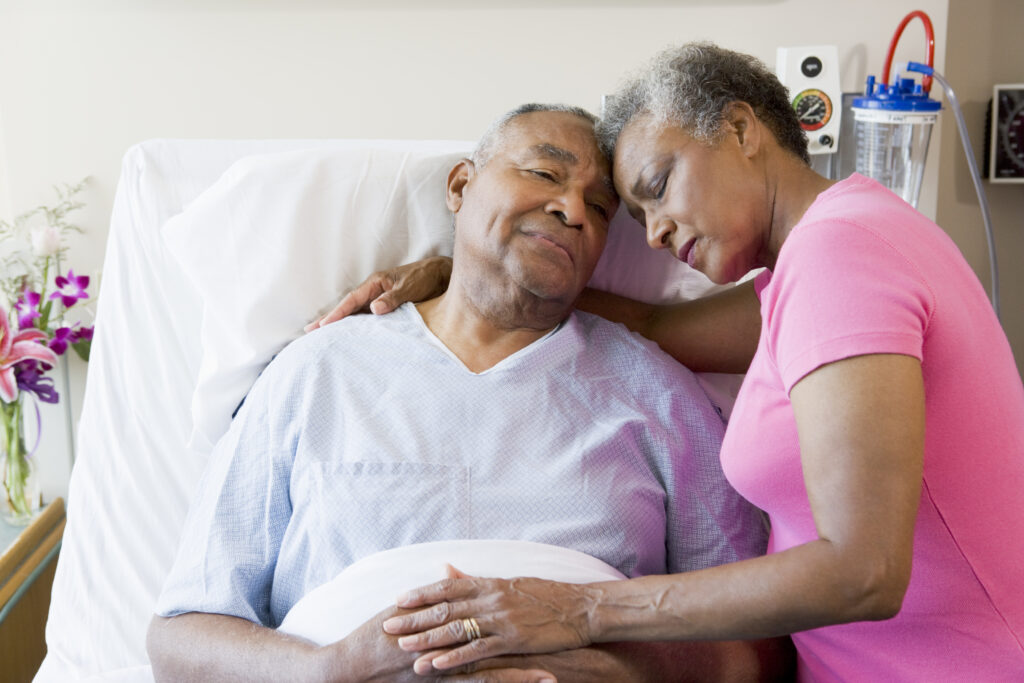The standard reasoning supporting physician-assisted suicide begins with a patient that is near death and is in, or expects to soon be in, a health state worse-than-death. The patient, acting in her own self-interest, wishes to die to get out of this situation. The physician in caring for the patient wishes to honor this request, because she has an interest in reducing the patient’s suffering.
To many people this argument rings true. To others it leaves a bad taste. Joining healthcare’s already overused language of empathy and caring together with the act of taking a life is concerning to some. Still others believe that the health state we are in is of secondary importance to the manner in which we live. For example, many who are disabled would say their disability is the most beautiful thing about themselves. By this they mean, there is beauty in the way they approach life and how they thrive in the presence of life’s barriers.
These views offer different ways of looking at the problem, but I have an even more fundamental concern of what a physicians’ role is in her patients’ decision to take her life.
Because physician-assisted suicide does not just end suffering but also ends a person, it trusts that in the future we would be the same person that we are now—the person who wants to commit suicide. However, most adults have experienced dramatic changes in perspectives over the course of their lives. In this respect, physician-assisted suicide hinges on the belief that the future is ours. Since prognosis is poor in medicine — more than 1 in 6 of those given a terminal prognosis live longer (in some cases considerably longer) than expected (1) — we cannot count on our natural death happening in close proximity to when a doctor advises that we can take our own life. Our “free choice” to end our life early may eliminate our self-determination in the future.
Studies that have followed suicide attempters have found that the vast majority of persons rapidly change their mind about suicide. In one famous study, Seiden (1978) followed 515 people between 1937 and 1971 who were restrained from jumping off the Golden Gate Bridge (2). He found that over 90% died of causes other than suicide or violent death. And most who did commit suicide, did so in the first few months after their original attempt. Among people who experience loss of independence, we also find changing attitudes toward suicide. Many able-bodied persons say that they would prefer their life to end if they were to sustain a high-level spinal cord injury, one that would paralyze their arms and legs and possibly leave them on a ventilator. However, research which has followed individuals who have sustained such injuries finds that over 90% are glad to be alive a year later and that 64% of those dependent on a respirator rate their quality of life as “Good” or “Excellent” (3).
The philosopher Derek Parfit has remarked, “We ought not do to our future selves what it would be wrong to do to other people”(4). Regrettably, evidence from economics and psychology suggests that we treat our future self badly. We accumulate consumer debt, have a poor diet, smoke, overuse antibiotics, become addicted to pain pills at an alarming rate and fail to take care of the environment. Much of this work has shown that people are present-biased—reversing preferences to favor present consumption. Put simply, we forsake our future self to reap a present benefit even if that benefit is smaller than what we would get in the future. We would even forsake our past self if we could. Imagine that as an infant you had experienced a 5-hour medical procedure that was severely painful and that you no longer remember. If there were some way to rewrite the past without going back in time, few persons today would trade that past experience for 1 hour of severe pain later today, even if this near present pain were subject to the same type of amnesia. The present self is not compelled to act to reduce suffering, but rather to respond to present welfare. Economics addresses the present self, but morality compels us to reduce suffering at all points during our life. The present self is not a good moral actor toward this end.
Most people who request physician-assisted suicide have psychological distress and a much smaller percentage have pain. Addressing these symptoms and helping to create an environment where patients can share time with family and friends is the best way to help people find meaning and purpose near death. The healthcare system needs to afford persons that are terminally ill a space for dying; a space that will give them the opportunity to look back on their lives with the same pleasure with which they had looked forward to the future when they started out in life. This is the best way to alleviate the hopelessness and despair that characterizes the person who wants to take his life when he is dying.
Acknowledgments: Thank you to Daniella Meeker and Tara Knight for helpful comments.
References
1. Christakis NA IT. Attitude and Self-reported Practice Regarding Prognostication in a National Sample of Internists. Archives of Internal Medicine. 1998;158:2389-2395.
2. Seiden RH. Where are they now? A follow-up study of suicide attempters from the Golden Gate Bridge. Suicide Life Threat Behav. 1978;8:203-216.
3. Patterson D, Miller-Perrin, C, McCormick, TR, Hudson, LD,. When Life Support Is Questioned Early in the Care of Patients with Cervical-Level Quadriplegia. . New England Journal of Medicine. 1993; 328:506-509.
4. Parfit D. Reasons and persons. Oxford University Press1984.
